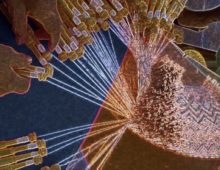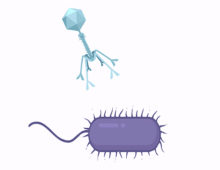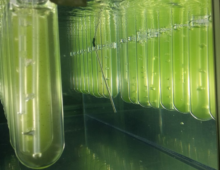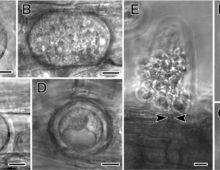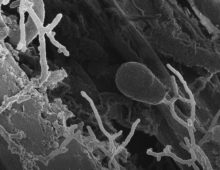A special issue of Synthetic Biology celebrates research enabled by the JGI DNA Synthesis Science Program.
A More Intuitive Phytozome Interface
JGI’s plant data portal team highlights the latest Phytozome update while assuring users will continue to have straightforward access to the existing data and features.
A Natural Mechanism Can Turbocharge Viral Evolution
A genetic element that enables rapid, targeted mutation is surprisingly widespread and appears to allow viruses to hunt new microbial prey.
Genome Insider S2 Episode 5: A Powerful Technique to Study Microbes, Now Easier
In this episode of JGI’s Genome Insider: Jennifer Pett-Ridge teamed with JGI scientists to improve a protocol, using robots to help process experiments that measure microbial activity in soil.
Refining the Process of Identifying Algae Biotechnology Candidates
A collaborative approach highlights how a screening and characterization pipeline could help accelerate algae biotechnology research efforts.
Olpidium, The Key to the Origin of Terrestrial Fungi
In this guest blog: a behind-the-paper look at the fungus Olpidium, a link in the evolution and transition of fungi from aquatic to terrestrial habitats.
Genome Insider S2 Episode 4: Party in the Rhizosphere
In this episode of the JGI’s Genome Insider, you’re invited to the rhizosphere, where the microbes play.
Behind the Paper: Hot Springs Metagenomics
Montana State University graduate student Nick Reichart spent a year at the JGI through the DOE Office of Science Graduate Student Research (SCGSR) program.
Bacteria and Fungi Divvy Up the Work in Forest Floor
While thousands of species of fungi and bacteria dwell on — and within — the forest floor, who’s recycling the plant biomass?
Gut Fungi: Unexpected Source of Novel Chemicals
Combing through the genomes of four anaerobic fungal species has revealed, for the first time, that this group is unexpectedly powerful: they can whip up dozens of complex natural products, including new ones.
